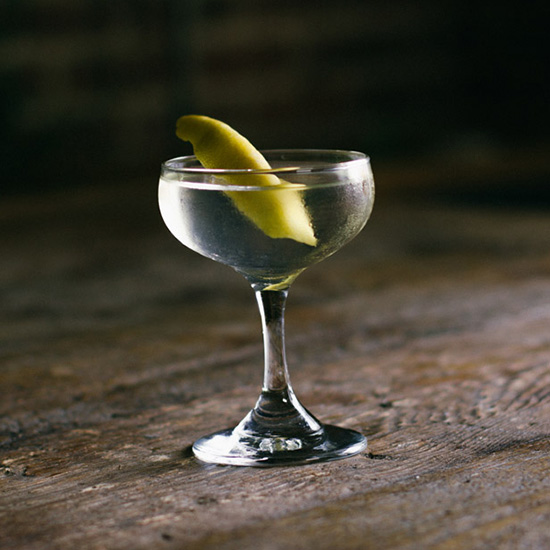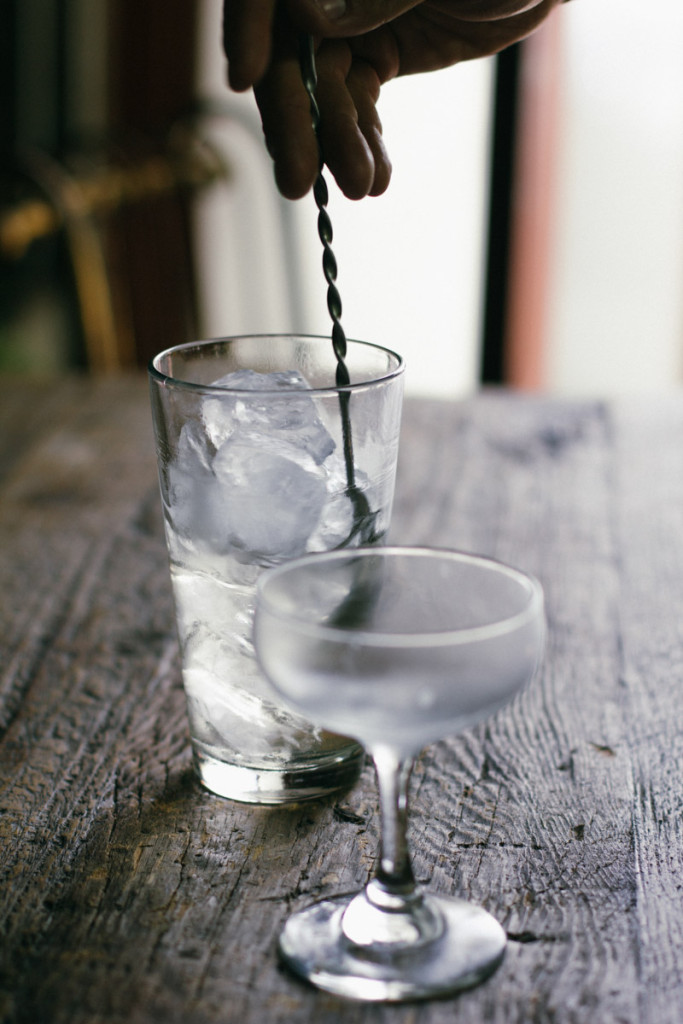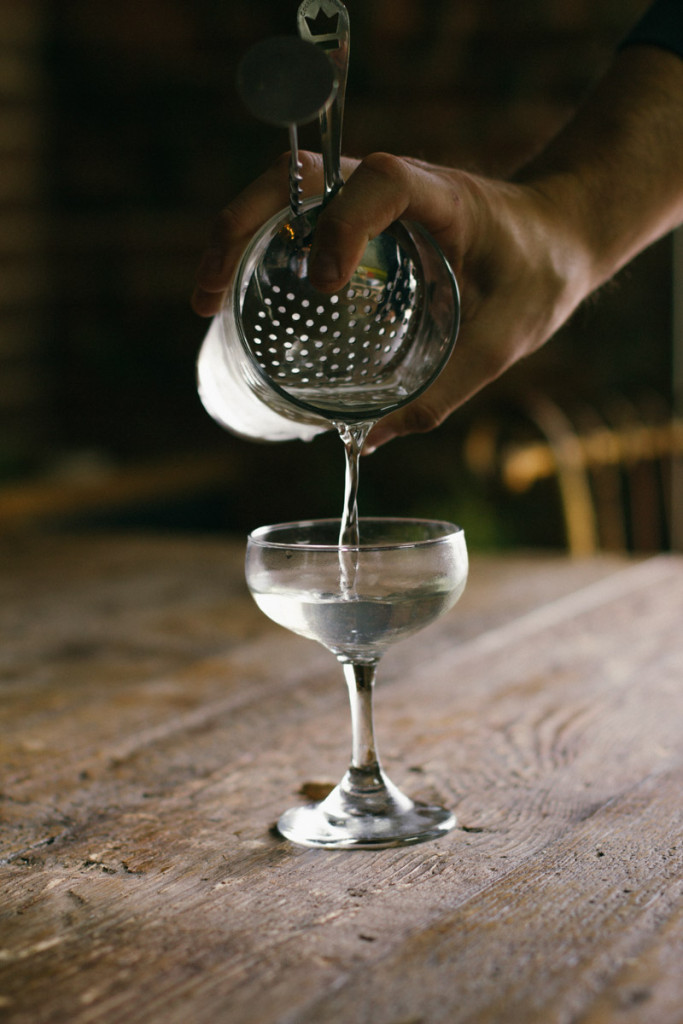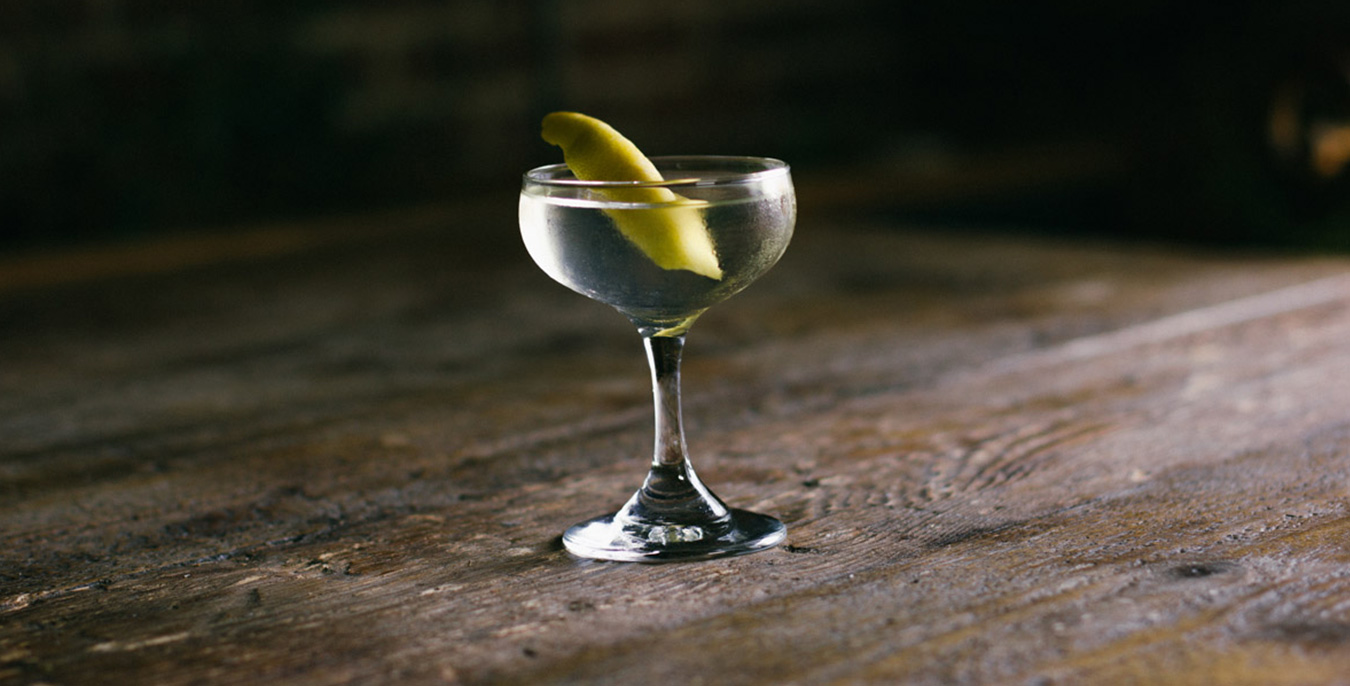Perhaps it is the name of the drink that has made it so ubiquitous. “Martini”—it just rolls off the tongue. I’ve often thought well-named drinks rise to the top amid the endlessly shifting tenor of the bar scene. And it might be because once the bartender greets you with a polite, “what’ll you have,” the next words to come out of your mouth define you in some small way. He might as well have said, “state your name”—and your name is not “Appletini.” (Speaking of which, let’s get this out of the way right here and now. An appletini is not a martini with an apple in it. In fact, it’s not a martini at all.) And that link to identity may be why the martini is a lightning rod of such disagreement, from the choice of vodka or gin, to shaken or stirred, right down to the storied origins of the drink.
“Martini” was the name of a brand of vermouth at the start of the 20th century right around the time this concoction first emerged. And since vermouth plays such a central role in the drink some have surmised it might be named for the vermouth brand. But residents of Martinez, California, claim the drink was named after their city, saying it was invented at the Occidental Hotel in San Francisco in the 1860s and served to thirsty patrons before they hopped the ferry to the mining town of Martinez. Still another theory links the drink to the name of a bartender at the Knickerbocker Hotel in New York City in 1912—but New Yorkers like to take credit for everything, so I’d take that one with a grain of salt.

The Classic Martini
2 oz. London Style Dry Gin
1 oz. Dry Vermouth (preferably French)
4 Dashes Orange Bitters
Combine all ingredients in a mixing glass, add ice, stir to dilute and chill the drink, then strain into a champagne coupe. Garnish with a lemon twist.
Whatever its origin, here’s what we do know: at the outset the martini was chiefly gin and dry vermouth, in a 2:1 ratio, with a few splashes of orange bitters, stirred with ice and then strained into a wine glass (the drink had yet to earn its own glass). By the 1930s the ratio of gin to vermouth had gone up to 3:1, by the 1940s it was 4:1, then 12:1, then 50:1 and down the line until vermouth became little more than an afterthought. I met a bartender once who splashed a couple drops of vermouth on an olive and then dropped the olive in chilled gin. In 1930 Harry Craddock at the Savoy in London published the Savoy Cocktail Book, in which nearly every cocktail, including the martini, was shaken, thus giving Ian Fleming and an entire generation of British connoisseurs a new image of the martini, and leading to James Bond’s famous line: “shaken, not stirred.”


I won’t tell you how to order a martini; I have no business prescribing drinks to anyone. No one owns the martini—it has no heirs, no guardians of its secrets, no police to keep its code. Like a good story, it belongs to all of us, to enjoy in our own time and on our own terms. But I will say what I think the martini is about: it’s about clarity. Three ingredients, hinting at the aromas of summer and citrus, turned over ice until cold, perfectly clear, symmetrically balanced from the proportions of the recipe to those of the glass itself. A study in elegant simplicity wherein the taste of the spirit is paramount, and all other things sing in harmony with it.
I’d venture that’s why H.L. Mencken called it, “the only American invention as perfect as the sonnet.”







Our comments section is for members only.
Join today to gain exclusive access.